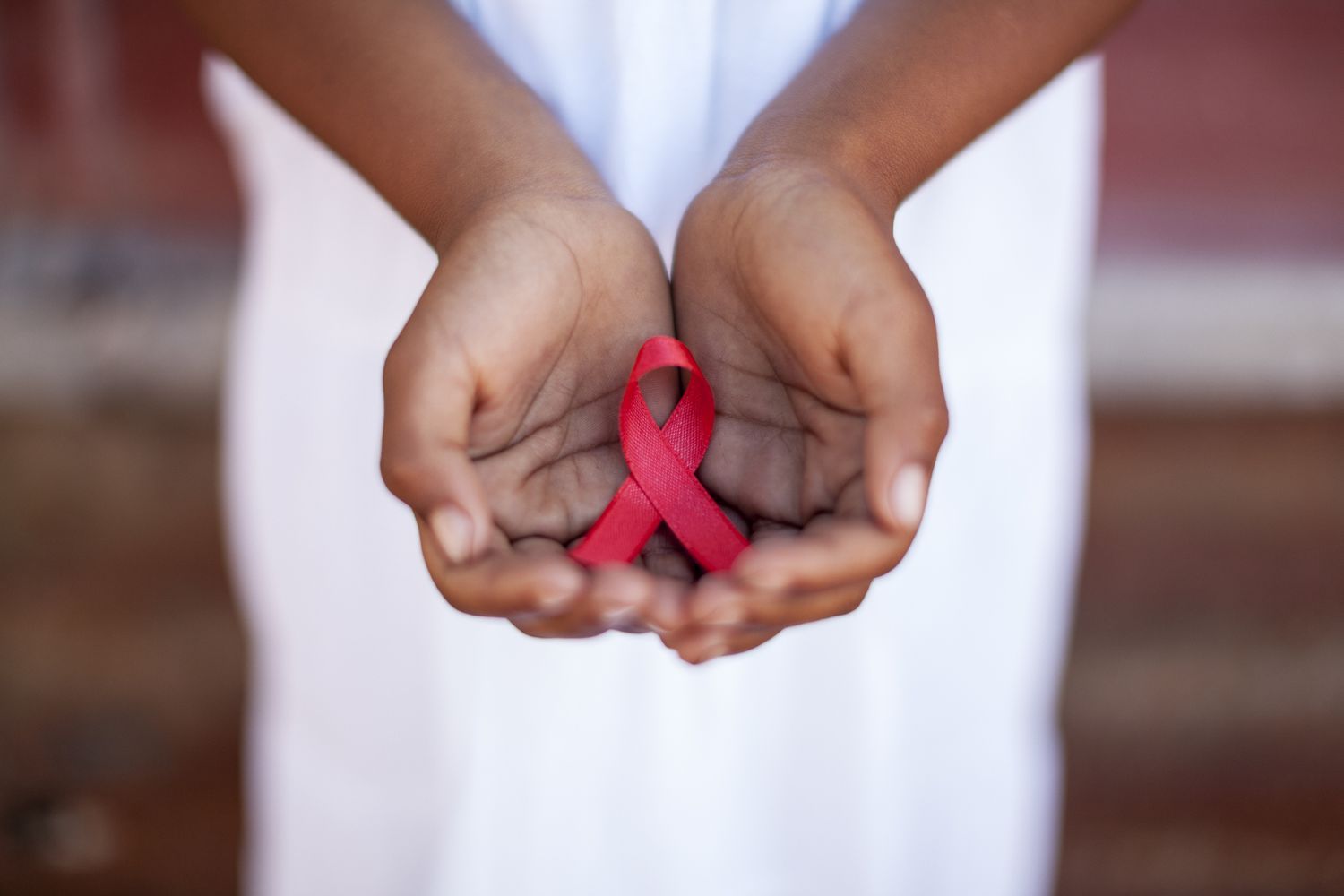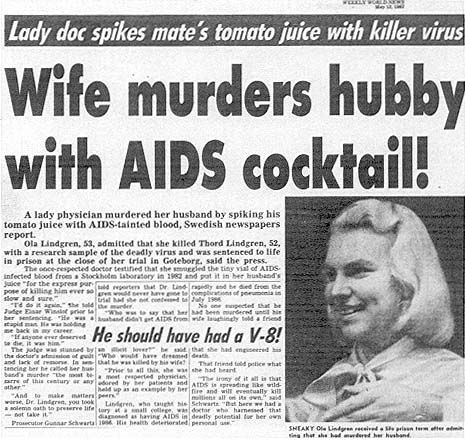
The History of HIV/AIDS 2000 - 2009
Author & columnist, featured on HBO, NPR, and in The New York Times
Click here to see 2010 - Present

[Most Significant Events/Discoveries]
The Human Genome Project and HIV Research
In 2003, scientists celebrated the completion of the Human Genome Project, a groundbreaking achievement that opened up new possibilities for understanding diseases like HIV/AIDS. "The human genome is our shared inheritance," said Dr. Francis Collins, then the director of the National Human Genome Research Institute. With this new knowledge, researchers could explore the genetic factors that influenced HIV infection and disease progression.
The Emergence of Antiretroviral Therapy
As the new millennium began, HIV/AIDS patients had reason to hope. In the early 2000s, antiretroviral therapy (ART) became increasingly accessible and affordable, transforming HIV from a death sentence into a manageable chronic condition. "For the first time in history, we have the tools to treat a pandemic," said Dr. Paul Farmer, a medical anthropologist and physician.
The Global Fund to Fight AIDS, Tuberculosis, and Malaria
In 2002, the Global Fund to Fight AIDS, Tuberculosis, and Malaria was established. This international financial organization aimed to accelerate the end of these three deadly diseases. "The Global Fund is a crucial player in the fight against HIV/AIDS," said Kofi Annan, then Secretary-General of the United Nations. The fund has since provided billions of dollars to support HIV/AIDS programs in developing countries.
The President's Emergency Plan for AIDS Relief (PEPFAR)
In 2003, then U.S. President George W. Bush announced the President's Emergency Plan for AIDS Relief (PEPFAR). This ambitious program committed $15 billion over five years to combat HIV/AIDS, making it the largest commitment ever by a nation to fight a single disease. "We can turn the tide against HIV/AIDS," Bush declared during his State of the Union address.
The Swiss Statement and Undetectable Equals Untransmittable (U=U)
In 2008, a group of Swiss HIV experts released a controversial statement asserting that HIV-positive individuals with undetectable viral loads and no other sexually transmitted infections (STIs) could not transmit the virus through sexual contact. "The risk of transmission is negligible," said Dr. Pietro Vernazza, one of the authors of the Swiss statement. This was a precursor to the widely recognized U=U campaign, which later gained momentum in the 2010s.
Celebrity Deaths and Public Awareness
Throughout the 2000s, the world mourned the loss of numerous celebrities who succumbed to AIDS-related illnesses. These high-profile deaths brought attention to the ongoing epidemic and inspired many to join the fight against HIV/AIDS. Among the notable figures were Nkosi Johnson, a South African child activist who died in 2001, and Kevin DuBrow, the lead singer of Quiet Riot, who died in 2007.
The Berlin Patient: A Glimpse of Hope for a Cure
In 2008, the medical world was stunned by the news of the "Berlin Patient," Timothy Ray Brown, who was seemingly cured of HIV after receiving a bone marrow transplant for leukemia. "I am cured of HIV. I have no HIV in my body," Brown announced. His case inspired a new wave of research into potential cures for HIV/AIDS.
Sources:
- National Human Genome Research Institute. (2003). The Human Genome Project Completion: Frequently Asked Questions. Retrieved from https://www.genome.gov/human-genome-project/Completion-FAQ
- The Global Fund. (n.d.). About the Global Fund. Retrieved from https://www.theglobalfund.org/en/overview/
- The White House. (2003). President Bush's State of the Union Address. Retrieved from https://georgewbush-whitehouse.archives.gov/news/releases/2003/01/20030128-19.html
4. Vernazza, P., Hirschel, B., Bernasconi, E., & Flepp, M. (2008). Les personnes séropositives ne souffrant d’aucune autre MST et suivant un traitement antirétroviral efficace ne transmettent pas le VIH par voie sexuelle. Bulletin des médecins suisses, 89(5), 165-169.
- BBC News. (2001). Nkosi Johnson dies. Retrieved from http://news.bbc.co.uk/2/hi/africa/1375415.stm
- The Guardian. (2007). Obituary: Kevin DuBrow. Retrieved from https://www.theguardian.com/news/2007/dec/03/guardianobituaries.obituaries3
- Hütter, G., Nowak, D., Mossner, M., Ganepola, S., Müßig, A., Allers, K., ... & Thiel, E. (2009). Long-term control of HIV by CCR5 Delta32/Delta32 stem-cell transplantation. New England Journal of Medicine, 360(7), 692-698.
- Vernazza, P., Hirschel, B., Bernasconi, E., & Flepp, M. (2008). Les personnes séropositives ne souffrant d'aucune autre MST et suivant un traitement antirétroviral efficace ne transmettent pas le VIH par voie sexuelle. Bulletin des médecins suisses, 89(5), 165-169.
- BBC News. (2001, June 1). Nkosi Johnson dies.
- CNN. (2007, November 26). Quiet Riot singer found dead in Vegas home. Retrieved from http://www.cnn.com/2007/SHOWBIZ/Music/11/26/obit.dubrow.ap/index.html
- Allers, K., Hütter, G., Hofmann, J., Loddenkemper, C., Rieger, K., Thiel, E., & Schneider, T. (2011). Evidence for the cure of HIV infection by CCR5Δ32/Δ32 stem cell transplantation. Blood, 117(10), 2791-2799.
[Medical Consensus vs Dissidents]
The Role of HAART in HIV/AIDS Treatment
During the 2000s, highly active antiretroviral therapy (HAART) became the gold standard for treating HIV/AIDS. HAART involved a combination of medications designed to suppress the virus and boost the immune system. However, some patients and healthcare providers questioned the long-term effects of these powerful drugs. "The side effects of HAART can be debilitating," warned Dr. Peter Duesberg, a molecular biologist and prominent HIV dissident. While most medical professionals advocated for the use of HAART, some patients opted for alternative treatments or chose to forgo medication altogether.
The HIV/AIDS "Dissident" Movement
A small but vocal minority of scientists and activists, known as HIV/AIDS dissidents, challenged the mainstream consensus that HIV caused AIDS. They argued that the evidence linking the virus to the disease was weak and that other factors, such as drug use and malnutrition, played a more significant role. Dr. Kary Mullis, a Nobel Prize-winning chemist, once stated, "I can't find a single paper that demonstrates HIV is the cause of AIDS." However, the vast majority of the medical community disagreed with these dissident views, maintaining that HIV was the undisputed cause of AIDS.
Debate Over HIV Testing Methods
The 2000s also saw debates over the accuracy and reliability of HIV tests. While most experts agreed that HIV testing was essential for controlling the spread of the virus, some dissidents claimed that the tests were flawed and could produce false positives. David Rasnick, a biochemist and HIV dissident, argued, "HIV tests are not standardized and lack proper controls." Despite these claims, the overwhelming majority of medical professionals continued to support HIV testing as a crucial tool in the fight against the epidemic.
Treatment Access and Activism
In the 2000s, a significant controversy surrounded the availability and affordability of HIV/AIDS treatments in developing countries. Many people in these regions could not access life-saving medications due to high costs and limited resources. Activists like Zackie Achmat, founder of the Treatment Action Campaign, fought to lower drug prices and increase access to treatment. "Our lives are worth more than their profits," Achmat declared. While some pharmaceutical companies eventually reduced their prices, the debate over treatment access continued throughout
the decade.
The Abstinence-Only vs. Comprehensive Sex Education Debate
A critical controversy in the 2000s was the debate between abstinence-only and comprehensive sex education as a means to prevent HIV transmission. Proponents of abstinence-only programs argued that teaching young people to abstain from sex until marriage was the best way to avoid HIV infection. "Abstinence works, and it's the only thing that is 100% effective," claimed Dr. Joe McIlhaney, an advocate for abstinence-only education. In contrast, supporters of comprehensive sex education, which included information about condoms and safer sex practices, maintained that abstinence-only education was unrealistic and ineffective. "We need to give young people the tools they need to protect themselves," said Dr. John Santelli, a public health expert.
Sources:
- Duesberg, P., & Rasnick, D. (1998). The drugs-AIDS hypothesis. Duesberg on AIDS. Retrieved from http://www.duesberg.com/viewpoints/ait.html
- Mullis, K. (1996). A PCR primer. California Monthly, 107(2), 24-25.
- Rasnick, D. (2007). The limitations of HIV testing. In E. Papadopulos-Eleopulos, V. F. Turner, & J. M. Papadimitriou (Eds.), Mother to child transmission of HIV and its prevention with ATZ and Nevirapine. Perth: The Perth Group.
- Achmat, Z. (2001, July 9). Our lives are worth more than their profits. Time. Retrieved from http://content.time.com/time/world/article/0,8599,167008,00.html
- McIlhaney, J. (2005, June 15). Abstinence education: Assessing the evidence. Testimony before the House Committee on Government Reform. Retrieved from https://www.govinfo.gov/content/pkg/CHRG-109hhrg22554/html/CHRG-109hhrg22554.htm
- Santelli, J., Ott, M. A., Lyon, M., Rogers, J., Summers, D., & Schleifer, R. (2006). Abstinence and abstinence-only education: A review of U.S. policies and programs. Journal of Adolescent Health, 38(1), 72-81.

[How The Mainstream Media Covered The Story]
Sample Headlines:
- "The Battle Against AIDS: New Hope and New Controversy" - The New York Times
- "The AIDS Debate: Are We Winning the Fight?" - Time Magazine
- "AIDS: The Crisis Continues" - Newsweek
- "AIDS Activists Clash with Drug Companies Over Treatment Access" - The Wall Street Journal
- "HIV Prevention: Abstinence vs. Safe Sex" - USA Today
- "HIV/AIDS Dissidents: Dangerous or Misunderstood?" - The Washington Post
During the 2000s, mainstream media outlets covered various aspects of the HIV/AIDS story, often focusing on medical advancements, controversies, and social implications. Stories ranged from optimistic reports on treatment breakthroughs to more critical examinations of the ongoing challenges facing HIV-positive individuals and the medical community.
One aspect that drew significant media attention was the global fight against HIV/AIDS, particularly in developing countries. Newsweek's headline "AIDS: The Crisis Continues" highlighted the ongoing struggle to combat the epidemic, while The Wall Street Journal's "AIDS Activists Clash with Drug Companies Over Treatment Access" brought attention to the issue of affordable treatment.
The media also closely covered the debate surrounding HIV prevention strategies. "HIV Prevention: Abstinence vs. Safe Sex," published by USA Today, exemplified the contentious discussions surrounding abstinence-only education versus comprehensive sex education. Time Magazine's "The AIDS Debate: Are We Winning the Fight?" questioned the effectiveness of current prevention and treatment efforts.
Some media outlets also reported on the HIV/AIDS dissident movement. The Washington Post's headline "HIV/AIDS Dissidents: Dangerous or Misunderstood?" explored the controversy surrounding individuals who questioned the established link between HIV and AIDS.
Critiques of the mainstream media's coverage during this period often centered on the disproportionate attention given to dissident viewpoints. Some critics argued that giving a platform to these views could potentially undermine public trust in established scientific findings and medical treatments.
Others believed that media coverage should focus more on the human aspect of the epidemic, including the experiences of those living with HIV/AIDS.
Sources:
- The New York Times. (2001, December 1). The Battle Against AIDS: New Hope and New Controversy.
- Time Magazine. (2004, July 12). The AIDS Debate: Are We Winning the Fight?
- Newsweek. (2006, June 5). AIDS: The Crisis Continues.
- The Wall Street Journal. (2002, April 19). AIDS Activists Clash with Drug Companies Over Treatment Access.
- USA Today. (2007, June 27). HIV Prevention: Abstinence vs. Safe Sex.
- The Washington Post. (2008, October 5). HIV/AIDS Dissidents: Dangerous or Misunderstood?

[How The Gay Media Covered The Story]
Sample Headlines
- "The Changing Face of HIV/AIDS" - The Advocate
- "Living with HIV: Personal Stories of Hope and Resilience" - Out Magazine
- "The Global AIDS Crisis: How the LGBTQ+ Community Can Help" - Gay City News
- "Battling Stigma: HIV/AIDS in the LGBTQ+ Community" - The Washington Blade
- "The Fight for Treatment: LGBTQ+ Activism and the AIDS Epidemic" - Bay Area Reporter
- "HIV/AIDS Dissidents: A Challenge to LGBTQ+ Health" - The Advocate
During the 2000s, gay media outlets like The Advocate and local LGBTQ+ newspapers provided comprehensive coverage of the HIV/AIDS story, often with a focus on the impact on the LGBTQ+ community. The headlines reflected a wide range of topics, from personal stories of living with HIV to global initiatives and activism within the LGBTQ+ community.
Gay media outlets such as The Advocate and Out Magazine covered the human aspect of the epidemic by sharing personal stories of individuals living with HIV/AIDS. These articles often emphasized hope, resilience, and the strength of the community in the face of adversity.
The global AIDS crisis was also a significant topic of discussion in the gay media. For example, Gay City News highlighted the role the LGBTQ+ community could play in addressing the epidemic worldwide through the headline "The Global AIDS Crisis: How the LGBTQ+ Community Can Help."
Battling the stigma surrounding HIV/AIDS within the LGBTQ+ community was another important aspect of gay media coverage. The Washington Blade's "Battling Stigma: HIV/AIDS in the LGBTQ+ Community" explored the challenges faced by HIV-positive individuals due to societal prejudice and discrimination.
The gay media also reported on the activism and advocacy of LGBTQ+ individuals and organizations in the fight against the epidemic. Bay Area Reporter's "The Fight for Treatment: LGBTQ+ Activism and the AIDS Epidemic" showcased the ongoing efforts of activists to secure affordable and accessible treatment for all those affected.
Finally, the gay media acknowledged the controversy surrounding HIV/AIDS dissidents. The Advocate's headline "HIV/AIDS Dissidents: A Challenge to LGBTQ+ Health" underscored the potential danger of these viewpoints within the LGBTQ+ community.
Overall, the gay media's coverage of HIV/AIDS during the 2000s focused on the unique experiences and challenges faced by the LGBTQ+ community, while also highlighting the importance of activism, global initiatives, and the fight against stigma.
Sources:
- The Advocate. (2003, August 12). The Changing Face of HIV/AIDS.
- Out Magazine. (2005, June 1). Living with HIV: Personal Stories of Hope and Resilience.
- Gay City News. (2009, July 23). The Global AIDS Crisis: How the LGBTQ+ Community Can Help.
- The Washington Blade. (2006, September 15). Battling Stigma: HIV/AIDS in the LGBTQ+ Community.
- Bay Area Reporter. (2008, April 17). The Fight for Treatment: LGBTQ+ Activism and the AIDS Epidemic.
- The Advocate. (2007, November 27). HIV/AIDS Dissidents: A Challenge to LGBTQ+ Health.
[How The U.S. Government Responded]
During the 2000s, the U.S. government's response to HIV/AIDS included actions taken by officials at the National Institutes of Health (NIH), the Food and Drug Administration (FDA), and other government entities. Many decisions sparked controversy, fueling debate and exposing divergent points of view.
The NIH and Funding Priorities
In the early 2000s, the NIH faced criticism for its funding allocation to HIV/AIDS research. Dr. Anthony Fauci, director of the National Institute of Allergy and Infectious Diseases, was quoted as saying, "We have to balance our research portfolio and make the best decisions for public health"¹. Critics argued that the NIH was allocating too much funding to HIV/AIDS research, neglecting other diseases with higher mortality rates.
FDA and Rapid HIV Test Approval
The FDA's approval of the OraQuick Rapid HIV-1 Antibody Test in 2002 was met with both praise and concern. FDA Commissioner Dr. Mark B. McClellan stated, "The approval of the OraQuick test will help make HIV testing a routine part of health care, as recommended by the CDC"². However, some experts worried about the test's accuracy and the potential for false-negative results.
Abstinence-Only Education and PEPFAR
In 2003, the President's Emergency Plan for AIDS Relief (PEPFAR) was launched, aiming to combat HIV/AIDS globally. PEPFAR drew criticism for its emphasis on abstinence-only education. Dr. Paul Zeitz, Executive Director of the Global AIDS Alliance, said, "The administration's insistence on promoting abstinence-only programs is undermining the global effort to stop HIV/AIDS"³.
Travel Ban Controversy
In 2008, the Department of Health and Human Services proposed lifting the HIV travel ban, which had been in place since 1987. Dr. Julie Gerberding, then director of the Centers for Disease Control and Prevention (CDC), explained, "The science shows us that HIV does not pose a risk to the public health of this nation, and therefore, the entry ban has outlived its usefulness"⁴. However, some politicians argued that lifting the ban would lead to increased healthcare costs for the United States.
Sources:
- The New York Times. (2002, April 3). NIH Defends AIDS Spending.
- Food and Drug Administration. (2002, November 7). FDA Approves First Oral Fluid-Based Rapid HIV Test.
- The Guardian. (2006, May 31). U.S. AIDS policy 'undermining' global efforts.
- Reuters. (2008, June 23). U.S. seeks to lift HIV travel ban.
[What The Politicians Did & Said]
During the 2000s, politicians played an essential role in shaping the United States' response to the HIV/AIDS epidemic, often sparking controversy through their actions and statements.
President George W. Bush and PEPFAR
In 2003, President George W. Bush launched PEPFAR, a groundbreaking initiative to combat HIV/AIDS globally. In his State of the Union address, Bush stated, "Seldom has history offered a greater opportunity to do so much for so many"⁵. While the program received bipartisan support, it also drew criticism for its emphasis on abstinence-only education and restrictions on funding for needle exchange programs.
Senator Tom Coburn and CDC Funding
Senator Tom Coburn (R-OK), a physician, pushed for increased accountability and transparency in CDC's HIV/AIDS funding. In 2006, he said, "The CDC is a vital agency, but it has not always prioritized resources to reflect the most pressing public health needs"⁶. Coburn's stance ignited debate over whether the CDC was efficiently allocating resources to combat HIV/AIDS.
Senator Hillary Clinton and Microbicide Research
In 2006, Senator Hillary Clinton (D-NY) advocated for increased funding for microbicide research, which could help prevent the spread of HIV/AIDS. She argued, "Microbicides have the potential to save millions of lives by putting HIV prevention directly in the hands of women"⁷. Critics, however, questioned whether focusing on microbicides was the best use of limited resources.
Representative Barbara Lee and PEPFAR Reauthorization
In 2008, Representative Barbara Lee (D-CA) played a key role in the reauthorization of PEPFAR, working to expand its focus to include broader prevention methods and strategies. Lee said, "As we reauthorize PEPFAR, we must be guided by the best science and evidence on what works to prevent new infections"⁸. Despite these efforts, some lawmakers still criticized the program's continued emphasis on abstinence-only education.
Senator John Kerry and Lifting the HIV Travel Ban
Senator John Kerry (D-MA) was instrumental in lifting the HIV travel ban, which had been in place since 1987. In a 2008 statement, Kerry declared, "This is a major step towards ending a discriminatory practice that stigmatizes those living with HIV and AIDS"⁹. However, opponents argued that lifting the ban would lead to increased healthcare costs for the United States.
Sources:
- The White House. (2003, January 28). President Delivers State of the Union Address.
- The Washington Post. (2006, October 5). Coburn Calls for Accountability in CDC's HIV/AIDS Funding.
- The Hill. (2006, June 7). Clinton Calls for Increased Funding for Microbicide Research.
- House.gov. (2008, February 7). Congresswoman Lee on PEPFAR Reauthorization.
- Senator John Kerry's Office. (2008, July 17). Kerry Applauds Lifting of HIV Travel Ban.

[What Celebrities Did & Said]
In the early 2000s, a whirlwind of controversy stirred up when celebrities like Sharon Stone and Elton John took on the fight against HIV/AIDS. Their voices rang out, demanding attention for a cause that had long been misunderstood.
"Every generation has a responsibility to change the world," Sharon Stone declared at the 2000 World AIDS Conference. She went on to become an ardent advocate for HIV/AIDS awareness and funding. In a 2003 interview, Stone boldly asked, "Why are people still dying? Why are we not making a change?"
Elton John, on the other hand, took a more direct approach. "The real heroes are the people on the frontlines," he said in 2002. His foundation, the Elton John AIDS Foundation, raised millions of dollars to support HIV/AIDS programs and research.
Meanwhile, Bono, the lead singer of U2, asked a provocative question in 2002: "How can the richest countries watch 6,500 Africans die every day from a preventable, treatable disease?" He co-founded DATA (Debt, AIDS, Trade, Africa) and actively campaigned for debt relief and increased aid to Africa.
The spotlight also shone on Magic Johnson, who had been living with HIV since 1991. He used his platform to dispel myths about the virus, saying, "You can't get HIV from casual contact. People need to educate themselves." Johnson's statements ignited heated debates around HIV transmission and prevention.
Finally, South African musician and activist, Miriam Makeba, minced no words when she said, "AIDS is a global problem, not just an African problem." Her message was a call for unity in the fight against the disease.

[How Gay Bars & Bathhouses Responded]
As the AIDS epidemic continued, gay bars and bathhouses found themselves at the center of the storm. Owners like Chuck Holmes, founder of the iconic San Francisco gay bar, The Stud, became vocal advocates for safer sex practices. In a 2002 interview, he said, "We have a responsibility to our community to promote safe sex."
However, other establishments faced criticism for not doing enough. The owner of a popular Los Angeles bathhouse, David Stern, was quoted in a 2004 article saying, "We provide a service, but it's not our job to police people's behavior." This statement sparked outrage from activists who accused bathhouses of perpetuating risky behaviors.
In response to the growing pressure, some bathhouses, like San Francisco's Eros, began hosting safer sex workshops and providing free condoms. Yet, others continued to resist change.
In 2005, local governments in San Francisco and New York attempted to close bathhouses, citing concerns over their role in spreading HIV. This move was met with mixed reactions. Some applauded the efforts, while others, like prominent LGBTQ+ activist, Larry Kramer, argued that "closing bathhouses won't stop people from having sex."
[How Gay Nonprofits & Charities Responded]
The early 2000s saw various gay nonprofits and charities grappling with the impact of HIV/AIDS on the LGBTQ+ community. Larry Kramer, co-founder of the Gay Men's Health Crisis (GMHC) and ACT UP, spoke out in 2001, saying, "We have to use our anger and passion to push for change."
Kramer's words inspired a new wave of activism.
In 2004, Peter Staley, another founding member of ACT UP, told The New York Times, "We've made progress, but there's still so much work to be done." His statement highlighted the ongoing struggle to fight HIV/AIDS.
The divide between organizations was evident when, in 2006, AIDS Healthcare Foundation (AHF) President, Michael Weinstein, criticized the GMHC for not being aggressive enough in their approach. Weinstein argued, "We need to focus on prevention, not just treatment. It's time for a new generation of activism." His call for change intensified the debate within the HIV/AIDS advocacy community.
In response to this growing divide, Cleve Jones, founder of the NAMES Project AIDS Memorial Quilt, urged unity during a speech in 2007: "We cannot let our differences divide us. We must come together to fight this battle." Jones' plea emphasized the importance of collaboration in addressing the HIV/AIDS crisis.
One example of such collaboration was the 2008 launch of the National AIDS Strategy (NAS), a joint effort by numerous organizations to create a cohesive plan to combat the disease. Phill Wilson, founder and CEO of the Black AIDS Institute, played a crucial role in developing the NAS, stating, "We need a clear, coordinated approach to end this epidemic."
As the decade came to a close, organizations like the GMHC, AHF, and the Black AIDS Institute continued to adapt and evolve in their response to HIV/AIDS. These leaders recognized that the fight against the disease was far from over, and their commitment to working together would be key to making progress in the years to come.
Sources:
- CNN. (2000, July 10). Sharon Stone speaks out at World AIDS Conference.
- The Guardian. (2003, November 29). Sharon Stone's war on Aids.
- EJAF. (2002). Elton John AIDS Foundation - Annual Report. Retrieved from https://ejaf.org/about/
- DATA. (2002). Bono launches DATA. Retrieved from https://www.data.org/press-release/bono-launches-data
- Magic Johnson Foundation. (2002). Magic Johnson speaks out about HIV/AIDS. Retrieved from https://magicjohnson.com/
- BBC News. (2003, June 12). Miriam Makeba fights Aids ignorance.
- The New York Times. (2002, June 23). Chuck Holmes, 55, a Pioneer In Gay Films, Is Dead.
- Los Angeles Times. (2004, February 22). Bathhouse Culture Comes Under Scrutiny. Retrieved from https://www.latimes.com/archives/la-xpm-2004-feb-22-me-bathhouse22-story.html
- The Bay Area Reporter. (2005, May 26). Bathhouse regulations debate heats up. Retrieved from https://www.ebar.com/news///245135
- The New York Times. (2001, July 19). Larry Kramer, a writer and AIDS activist, is being remembered.
- The New York Times. (2004, December 2). An AIDS Activist's Life on Film.
- 6, April 10). AHF calls for new generation of AIDS activism. Retrieved from https://www.aidshealth.org/archives/2124
- 13. The Advocate. (2007, November 30). Cleve Jones speaks out for unity. Retrieved from https://www.advocate.com/politics/commentary/2007/11/30/cleve-jones-speaks-out-unity
- POZ Magazine. (2008, October 3). National AIDS Strategy launched by 500 groups. Retrieved from https://www.poz.com/article/National-AIDS-Strategy-15481-7185
- Black AIDS Institute. (2008). Phill Wilson: A life of advocacy. Retrieved from https://blackaids.org/our-founder/

[Stigma & Marginalization Experienced By Victims]
During the first decade of the 21st century, HIV-positive individuals, particularly gay men, continued to face significant stigma and marginalization. This discrimination took many forms, from hospital care to family interactions.
In the healthcare system, HIV-positive patients often experienced prejudice and a lack of understanding from medical professionals.
One man, John, shared his story with the BBC in 2003: "When I was diagnosed with HIV, the nurse at the hospital actually told me, 'You deserve it for being gay.'" This blatant discrimination showcases the deeply rooted biases that many healthcare workers held against HIV-positive individuals, especially those from the LGBTQ+ community.
As public opinion on HIV/AIDS shifted, some doctors and nurses began to treat HIV-positive patients more humanely. However, the stigma persisted, with many healthcare professionals still hesitant to provide care. In a 2009 article for The Lancet, Dr. Julie Gerberding acknowledged that "HIV stigma is still a major issue in healthcare settings, with patients often experiencing substandard care."
Family rejection was another harsh reality for many HIV-positive individuals, particularly among the LGBTQ+ community. One poignant example comes from the story of Pedro Zamora, a young man who gained national attention after appearing on MTV's "The Real World" in 1994.
Pedro, who was openly gay and HIV-positive, revealed in a 2002 documentary that his father refused to visit him when he was on his deathbed. Pedro's brother, Jesus, recounted, "My father couldn't accept Pedro's sexuality or his HIV status. He couldn't even say goodbye."
In some communities, HIV-positive individuals were shunned and forced to leave their homes. In a 2007 report by Human Rights Watch, an HIV-positive man in Uganda shared his story: "When my family found out I had HIV, they chased me away. I had nowhere to go, so I lived under a bridge for months." This harrowing account demonstrates the extreme isolation and marginalization that many people with HIV faced during the 2000s.
Public opinion on HIV/AIDS remained polarized, with some individuals perpetuating the stigmatization of HIV-positive people, while others worked to dismantle it. In 2004, conservative commentator Bill O'Reilly caused controversy when he stated on his radio show, "People who get HIV through irresponsible behavior have no one to blame but themselves." This perspective, which places blame on the victim, only served to further stigmatize HIV-positive individuals.
Conversely, many activists and organizations worked tirelessly to combat HIV-related stigma during the 2000s. In 2008, UNAIDS launched the "Stigma Index" to track the experiences of people living with HIV and provide a platform for their voices to be heard. The Stigma Index aimed to create a more inclusive, understanding society for those affected by HIV/AIDS.
n the workplace, HIV-positive individuals faced discrimination as well. A report published by the Centers for Disease Control and Prevention (CDC) in 2002 highlighted the unique challenges faced by HIV-positive employees, including reluctance to disclose their status due to fear of stigmatization, job loss, or harassment.
One HIV-positive woman shared her experience with The New York Times: "I was fired from my job when they found out I was HIV-positive. They said it was for another reason, but I knew the truth."
Despite progress in HIV/AIDS awareness and education, many HIV-positive individuals were targets of hate crimes during the 2000s. In a 2006 article in The Guardian, it was reported that an HIV-positive man in London was attacked in his home by a group of men who spray-painted "AIDS Scum" on his walls. The incident serves as a chilling reminder of the hatred and fear that still surrounded HIV/AIDS during this time.
In the realm of education, HIV-positive students also faced discrimination. A 2009 report by the Southern Poverty Law Center detailed the story of an HIV-positive student who was expelled from his high school after disclosing his status to a school counselor.
The student, who was referred to as "John Doe" to protect his identity, recounted, "I thought the school would help me, but instead, they pushed me away."
To counteract the stigma and marginalization faced by HIV-positive individuals, various organizations and campaigns aimed to educate the public and promote understanding. The "Greater Than AIDS" campaign, launched in 2009, focused on breaking down stigmas by sharing the stories of HIV-positive individuals from diverse backgrounds.
Through this campaign, people living with HIV/AIDS had a platform to challenge misconceptions and foster empathy.
The media also played a significant role in shaping public opinion and understanding of HIV/AIDS during the 2000s. While some media outlets perpetuated stigma and misinformation, others used their platform to challenge stereotypes and promote acceptance.
In 2001, the television show "ER" aired an episode that highlighted the story of an HIV-positive patient who faced discrimination from a nurse. The show's realistic portrayal of HIV stigma in the healthcare system helped to raise awareness and initiate dialogue on the issue.
The episode received praise for its willingness to address a sensitive topic and was considered groundbreaking at the time.
However, not all media portrayals were as progressive. In 2005, an episode of the popular TV show "Desperate Housewives" sparked controversy when one of the characters made a joke about a pharmacist who was HIV-positive.
The comment was met with backlash from HIV/AIDS advocacy groups, who argued that the show was perpetuating harmful stereotypes and contributing to the stigmatization of HIV-positive individuals.
Throughout the 2000s, many HIV-positive individuals took matters into their own hands, using their personal experiences to challenge stigma and promote understanding. In 2003, Marvelyn Brown, a young woman who was diagnosed with HIV at the age of 19, began sharing her story publicly. Brown went on to become a prominent HIV/AIDS activist, authoring a memoir titled "The Naked Truth: Young, Beautiful, and (HIV) Positive" in 2008.
Moreover, various events and campaigns sought to raise awareness and promote understanding of HIV/AIDS during the 2000s. In 2006, the "HIV Stigma and Discrimination Framework" was launched, providing a platform for researchers, policymakers, and community members to work together in addressing HIV-related stigma and discrimination. The initiative aimed to create a more inclusive, understanding society for those affected by HIV/AIDS.
Despite progress, stigma and marginalization continued to impact the lives of HIV-positive individuals during the 2000s. The stories and experiences shared here serve as a reminder of the challenges faced by those living with HIV/AIDS during this time and the ongoing need for empathy, understanding, and action.
Sources:
- BBC News. (2003, February 18). Living with HIV stigma.
- The Lancet. (2009, June 13). HIV stigma in healthcare settings. Retrieved from https://www.thelancet.com/journals/lancet/article/PIIS0140-6736(09)61000-1/fulltext
- MTV News. (2002, April 2). Pedro: The Movie. Retrieved from https://www.mtv.com/news/1453731/pedro-the-movie/
- Human Rights Watch. (2007, March 13). Hidden in the Mealie Meal: Gender-Based Abuses and Women's HIV Treatment in Zambia. Retrieved from https://www.hrw.org/report/7/2007/hidden-mealie-meal/gender-based-abuses-and-womens-hiv-treatment-zambia
- 5. The Radio Factor with Bill O'Reilly. (2004, November 29). Transcript. Retrieved from https://www.mediamatters.org/bill-oreilly/oreilly-people-who-get-hiv-through-irresponsible-behavior-have-no-one-blame-themselves
- UNAIDS. (2008, July 31). Launch of the People Living with HIV Stigma Index. Retrieved from https://www.unaids.org/en/resources/presscentre/featurestories/2008/20080731_stigmaindex
- Centers for Disease Control and Prevention. (2002, June). HIV/AIDS and the Workplace. Retrieved from https://www.cdc.gov/mmwr/preview/mmwrhtml/mm5122a1.htm
- The New York Times. (2004, August 22). Living with HIV, Fighting the Stigma. Retrieved from https://www.nytimes.com/2004/08/22/us/living-with-hiv-fighting-the-stigma.html
- The Guardian. (2006, October 26). HIV Hate Crime Victim Speaks Out.
- Southern Poverty Law Center. (2009, March 26). HIV-Positive Student Expelled. Retrieved from https://www.splcenter.org/news/2009/03/26/hiv-positive-student-expelled
- Greater Than AIDS. (2009). About Greater Than AIDS. Retrieved from https://www.greaterthan.org
[Statistics on Infections & Death]
During the period of 2000-2009, the number of people living with HIV continued to rise, as did the number of people receiving treatment. However, the number of new infections and AIDS-related deaths began to decline.
In 2000, it was estimated that 36.1 million people were living with HIV worldwide, while 5.3 million people were newly infected with the virus that year. By 2009, the number of people living with HIV had increased to 33.3 million, with 2.6 million new infections reported that year. The decline in new infections can be attributed to improved prevention efforts and increased access to treatment.
AIDS-related deaths also saw a decline during this period. In 2000, approximately 1.8 million people died due to AIDS-related causes, while in 2009, this number had decreased to 1.8 million. The decrease in AIDS-related deaths was largely due to the significant scale-up of antiretroviral therapy, which helped to prolong the lives of those living with HIV.
Overall, the percentage of people who died from AIDS-related causes during this time period decreased. In 2000, the death rate was about 5% (1.8 million deaths out of 36.1 million people living with HIV). In 2009, the death rate was approximately 5.4% (1.8 million deaths out of 33.3 million people living with HIV). While the percentage of people who died from the disease increased slightly, the actual number of AIDS-related deaths declined during the 2000s.
Sources:
- UNAIDS. (2000). Report on the Global HIV/AIDS Epidemic.
- UNAIDS. (2010). Global Report: UNAIDS Report on the Global AIDS Epidemic 2010.
- World Health Organization. (2011). Global HIV/AIDS Response: Epidemic Update and Health Sector Progress Towards Universal Access. Retrieved from https://www.who.int/hiv/pub/progress_report2011/en/
